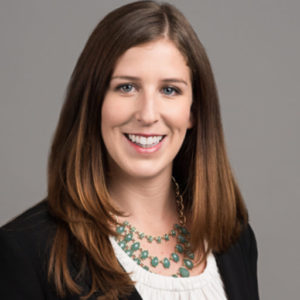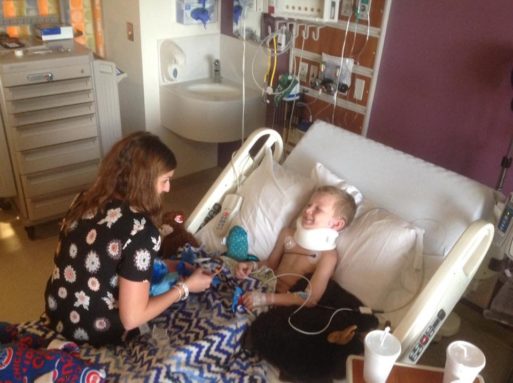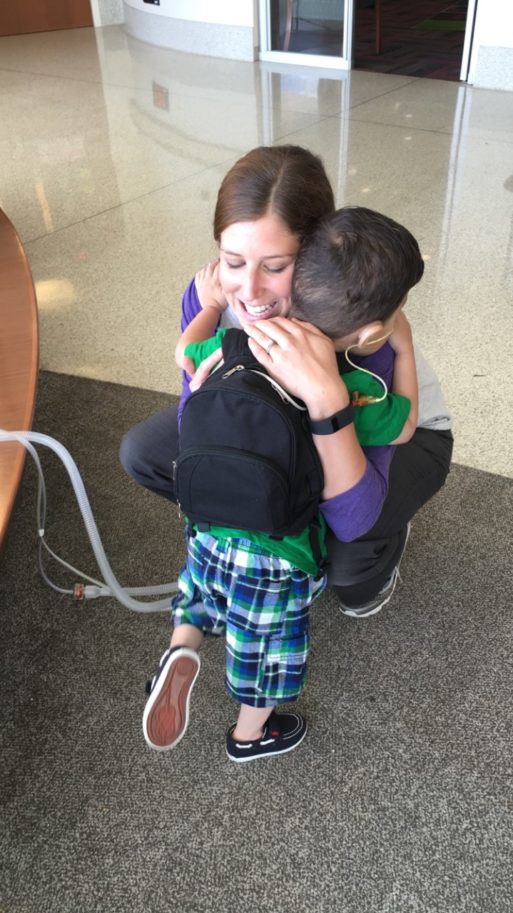In this interview, SevenPonds speaks with Kelsey Mora, a certified child-life specialist (CCLS) at Advocate Health in Chicago and chair of their system-wide pediatric and perinatal bereavement support group. Her work as a CCLS provides in-person support for children and adolescents facing acute and chronic medical challenges of their own or that of a family member.
Editor’s note: This interview has been edited for length and readability.

Kelsey Mora CCLS
Laura B. Hayden: Good morning Kelsey. I understand you work with a very special clientele — children and teens who are facing medical crises. Can you explain what you do as a child-life specialist that is different from a doctor or nurse?
Kelsey Mora: My sole purpose as a child-life specialist is to provide comfort and coping skills for a child going through a stressful medical experience. How can I make their situation better? As a certified child-life specialist, I use therapeutic play to support children and their families in health care settings. My elevator speech is: We use play to decrease stress and increase coping; we teach children about their diagnosis and procedures, and we celebrate big and small moments in the hospital.
Laura: Is this non-medical role new in pediatric care?
Kelsey: Well, 40 years ago there were one or two child-life specialists here at Advocate Children’s Hospital. Now we have 14. And these days you’ll find child-life specialists in other settings, like pediatric outpatient clinics, schools, camps, dentists’ offices, funeral homes and courtrooms. CCLSs work with children who have witnessed a traumatic event whether it involved the children themselves or their parent, sibling, close relative or friend.
Laura: That sounds like challenging work. What led you to this field?
Kelsey: When I was a teenager I spent a lot of time with my friend who died of leukemia. I saw what went on in the hospital and bedside.
Laura: I’m sorry. I can understand how that pointed you in the direction for this work. What is a typical day on the job like for you?
Kelsey: I never really know what to expect. I could be bringing a high-profile athlete room to room to visit the patients and then move on to helping a child who is scared about a procedure or spend time talking with a child whose sibling is dying.
One “typical” Thursday awhile ago, I started out knowing that my patients who are having a “good day” would be healthy enough to participate in pet therapy and a bedside magic show. We may even have had a birthday to celebrate or an end-of-chemo party. What I didn’t know that morning was that there was a horrible car accident the night before resulting in the death of a child’s mother and brother and leaving behind a grieving father. The child had been put on life support in the Pediatric Intensive Care Unit (PICU) and had become my newest patient.
Laura: Phew! That’s a tough agenda. It sounds like you have to be ready for anything — celebration and tragedy. How do you maintain your own steadiness and composure through unforeseen circumstances and trauma?

Therapeutic play helps to normalize a child’s hospital stay.
Kelsey: My colleagues and I work as a team that supports one another. Together we decide how we can make the situation better for the children. We focus on what the child needs to cope.
On the particular Thursday that I mentioned earlier, I started by gathering updates from our incredible team including the nurses, physicians, chaplain, social worker and my emergency department child-life colleague. That was when the real work began. I gathered donated items to normalize the young girl’s hospital environment. It might have been a pink fleece blanket to brighten her hospital bed or a doll dressed in a patient gown to give her a companion she could relate to.
I next approached her father. I began by explaining my role. At that point, he set aside his own grief (as most parents in this situation do) and asked: “How will I tell my daughter?” We spoke about developmentally appropriate language to use and ways to create positive memories of his son and wife. Next, I provided him with grief resources. I printed photos of his family to place in his daughter’s bed and on the walls to personalize her hospital room.
When she was taken off of the ventilator later in the afternoon and placed on oxygen, I approached her carefully and cautiously, got down on her level and introduced myself. I said, “My name is Kelsey, and I am here to make you as comfortable as possible in the hospital and to help your worries go away.” I provided reassurance and explained the many tubes and medical equipment on her body. As necessary, I provided distractions, including movies and activities to look forward to or techniques to help her stay calm during a difficult procedure. Most of all, I provided her with a safe space and hospital confidante — following her lead, assessing the right time to share the most difficult news alongside her father, whose heart was broken.

CCLS Kelsey Mora offers hugs
and coping skills to her young patients.
Laura B. Hayden: Welcome back Kelsey. Last week you told us that child-life specialists use therapeutic play to support children and their families in health care settings. Can you tell us more about that?
Kelsey Mora: One of the best ways a child-life specialists connect with children is through therapeutic play. Developmentally, children do not have the verbal language skills to express their thoughts and feelings about being a patient or watching someone close to them being treated. Playing, however, comes naturally to them — it’s what they do, even when they are sad. When children play they express what is troubling them.
A lot of what we do is fun — it looks like play, but it has a much deeper meaning. A scavenger hunt encourages a child to walk. A sticker chart keeps track of breathing exercises. There is a purpose behind every activity. It’s important to get down to their level, physically and intellectually. Children’s books and art help. A grieving child may not be able to talk about their pain, but they might draw Angry Birds.
Laura: Now this is a difficult question to ask, no less answer. While you see most of the children you work with get better, others are chronically ill and terminally ill. How do they respond to your work with them?
Kelsey: Yes, I work with children who face grave illness. Many get better but some are facing death in the ICU. The most common is the oncology population. But terminally ill children yearn for normalcy just like well children. They want to take part in normal life experiences, playfulness and fun. What most people do not realize is that kids are resilient and can face very difficult things. It’s so important to let their voices be heard.
The same goes for children who grieve great losses. It’s not unusual for child-life specialists to have the same patients for years. One young girl I work with has received support for four years now. She has different needs now than when she started.
I coach parents quite a bit about what to say to grieving children. I tell them to use concrete language — to say “died” instead of “passed away,” and to convey the message to the child that they can handle whatever the child needs to express about what they are going through, be it illness or grief. Sometimes I ask children to journal about how they feel or write a six-word memoir title that tells their story. When I think about why I do what I do, I think about the six-word memoir title I created during a narrative medicine self-care event.

Kelsey’s caring hugs are sure to be returned.
Laura: Would you share that?
Kelsey: Sure – making hard moments into better memories.
Laura: Those six words say a lot. You’ve really helped me understand your role with these children. What would you say is the best part of your job?
Kelsey: The best part of my job is when children, faced with life’s most challenging events, heal– not just physically, but emotionally. When they smile for the first time during a music therapy session. Or when they use an arm attached to an IV to engage in an intervention with art therapy, because they understand that the IV is just a “soft straw” and not a needle. And when they feel proud after holding still through a CT scan because they were prepared and knew what to expect.
Just like my six-word memoir title says, I try to make the hard moments into better memories. I know the little girl I talked about last week, who lost her mother and brother in a car accident, will be a teenager 10 years from now. And she will still snuggle with her hospital fleece blanket and hold onto her mementos of her mother and brother. When she returns to the doctor for a follow-up visit, she will not feel scared but will feel excited to visit her hospital family, knowing that they will help her and not hurt her.
Laura: Yes, that is quite an accomplishment! Thank you so much for sharing your time and stories with the SevenPond readers. You do such important work for very special people.

 How do Child-life Specialists Help Children Cope with Illness and Death?
How do Child-life Specialists Help Children Cope with Illness and Death?



 “Summons” by Aurora Levins Morales
“Summons” by Aurora Levins Morales
 How To Dispose of a Body In Space
How To Dispose of a Body In Space














